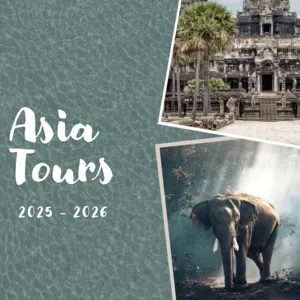Sustainable Travel Bangladesh
Sustainable Travel in Bangladesh: Explore Responsibly
Embark on a journey of discovery through Bangladesh, a land of vibrant culture, breathtaking landscapes, and warm hospitality. As we introduce our “Sustainable Travel Bangladesh” category, we aim to highlight ways to explore this beautiful country while minimizing your environmental impact and maximizing your positive contribution to local communities. We believe that travel should be enriching for both the visitor and the visited, and this is the core principle of sustainable tourism.
What is Sustainable Travel?
Sustainable travel, also known as responsible travel or ecotourism, is about making conscious choices that benefit the environment, local economies, and cultural heritage of the destinations we visit. It’s about respecting the natural world and the people who call these places home. In Bangladesh, this means choosing eco-friendly accommodations, supporting local businesses, reducing waste, and engaging with communities in a respectful and meaningful way.
Key Principles of Sustainable Tourism
The principles below serve as a guide for making more informed and responsible travel choices.
- Environmental Conservation: Protecting natural resources, biodiversity, and ecosystems.
- Economic Viability: Ensuring that tourism benefits local communities economically.
- Social Equity: Respecting local cultures, traditions, and human rights.
- Cultural Preservation: Supporting the preservation of historical sites and cultural practices.
Eco-Friendly Adventures in Bangladesh
Bangladesh offers a wealth of opportunities for eco-conscious travelers. From the lush tea gardens of Sylhet to the mangrove forests of the Sundarbans, there’s an adventure waiting for everyone who wants to experience the natural beauty of Bangladesh responsibly.
Explore the Sundarbans: A UNESCO World Heritage Site
The Sundarbans, the world’s largest mangrove forest, is a haven for biodiversity, including the Royal Bengal Tiger. Opt for eco-friendly tours that adhere to responsible wildlife viewing guidelines. Many operators now use solar-powered boats and employ local guides, ensuring that your visit contributes to the conservation of this unique ecosystem.
Address: Sundarbans, Khulna Division, Bangladesh
Opening Hours: Generally accessible during daylight hours, but specific tour times vary.
Availability: Tours are available year-round, but the best time to visit is during the cooler months (October to March).
Prices: Tour prices vary widely depending on duration, type of boat, and amenities. Expect to pay anywhere from $50 to $300+ per person.
Discover the Tea Gardens of Sreemangal
Sreemangal, known as the tea capital of Bangladesh, offers stunning landscapes of rolling hills covered in vibrant green tea bushes. Visit eco-friendly tea estates that practice sustainable farming methods and support local communities. Many offer tours where you can learn about the tea-making process from leaf to cup.
Address: Sreemangal, Moulvibazar District, Sylhet Division, Bangladesh
Opening Hours: Tea estates typically welcome visitors during daylight hours.
Availability: Year-round, but the best time to visit is during the cooler, drier months (October to March).
Prices: Tea estate tours often range from $5 to $20 per person.
Trek through Lawachara National Park
Lawachara National Park is a semi-evergreen forest that’s home to a variety of wildlife, including the endangered Hoolock Gibbon. Choose guided treks that prioritize minimal disturbance to the environment and support local conservation efforts. Remember to carry reusable water bottles and avoid single-use plastics.
Address: Lawachara National Park, Kamalganj, Moulvibazar, Sylhet Division, Bangladesh
Opening Hours: Sunrise to Sunset, daily.
Availability: Open year-round, but the best time to visit is during the cooler, drier months (October to March).
Prices: Entry fees are typically around $5-$10 for foreigners. Guide fees are extra and vary.
Supporting Local Communities
One of the most rewarding aspects of sustainable travel is the opportunity to connect with local communities and contribute to their well-being. Here are some suggestions of places to wisit:
Most interesting: Somapura Mahavihara
Somapura Mahavihara, a UNESCO World Heritage site, is a vast ancient Buddhist monastery. Its scale and intricate terracotta plaques are captivating, revealing a rich history of Buddhist scholarship and art.
Address: Paharpur, Badalgachhi Upazila, Naogaon District, Bangladesh
Opening Hours: Typically 9 AM to 5 PM, with variations depending on the season.
Availability: Open year-round.
Prices: Entry fee for foreigners is approximately $2-$5.
Most piquant: Old Dhaka Food Tour
A culinary journey through Old Dhaka offers a surprising and sometimes challenging exploration of unique flavors and textures, such as *kacchi biryani* and various street foods, that might not be for the faint of heart.
Most spectacular: Ratargul Swamp Forest
Ratargul Swamp Forest, one of the few freshwater swamp forests in the world, offers a visually stunning landscape of submerged trees, especially during the monsoon season when the forest floor is flooded.
Address: Ratargul Swamp Forest, Gowainghat, Sylhet, Bangladesh.
Opening hours: Usually accessible during daylight hours.
Availability: Best visited during or just after the monsoon season (June to September) when the water level is high.
Prices: Boat hire prices range from $10-$20 depending on the size and duration.
Funniest: Rickshaw Art
The vibrant and often humorous rickshaw art found throughout Bangladesh’s cities can bring unexpected smiles. These moving canvases depict everything from Bollywood stars to fantastical creatures, offering a lighthearted glimpse into local pop culture.
Most mysterious: Nijhum Dwip
Nijhum Dwip, or “Silent Island,” is shrouded in a sense of remoteness and tranquility. Its history as a relatively newly formed island, its migratory bird populations, and its sparse human habitation create an aura of mystery.
Address: Nijhum Dwip, Hatiya Upazila, Noakhali District, Bangladesh.
Opening hours: Accessible by boat; travel during daylight hours is recommended.
Availability: Best visited during the winter months (November to February) for pleasant weather and birdwatching.
Prices: Boat trips to the island can vary significantly in price, ranging from $20 to $50 or more depending on the distance and type of boat.
Most extreme: Bandarban Hill Tracts
For experienced trekkers, the Bandarban Hill Tracts offer challenging terrain, remote indigenous villages, and the chance to experience a side of Bangladesh rarely seen by tourists. *Note: Permits and local guides are essential, and travel to this region requires careful planning.*
Address: Bandarban District, Chittagong Division, Bangladesh
Opening Hours: N/A (Trekking is generally done during daylight hours)
Availability: The best time to visit is during the dry season (October to March).
Prices: Trekking permits and guide fees can vary significantly. Expect to pay at least $50-$100 per day, possibly more depending on the trek’s length and remoteness.
Most inspiring: Dhaka’s Artisans
Visiting workshops and markets where traditional crafts are made, such as pottery villages or weaving centers, can be incredibly inspiring. Witnessing the skill and dedication of artisans keeping these traditions alive connects you to the heart of Bangladeshi culture.
The most amazing: Cox’s Bazar
Cox’s Bazar boasts the world’s longest natural sea beach, an incredible natural phenomenon that stretches for over 120 kilometers.
Address: Cox’s Bazar, Chittagong Division, Bangladesh
Opening Hours: The beach is open 24/7, but most activities and services are available during daylight hours.
Availability: Year-round, but the peak season is during the cooler months (October to March).
Prices: Access to the beach is generally free, but there may be charges for specific activities or amenities.
The most atmospheric: Ahsan Manzil (Pink Palace)
Ahsan Manzil, once the official residential palace of the Nawabs of Dhaka, exudes a unique atmosphere with its pink facade, grand architecture, and historical significance.
Address: 2/3 Islampur Rd, Dhaka 1100, Bangladesh
Opening Hours: 10:30 AM – 5:30 PM (Saturday – Wednesday), 3:00 PM – 8:00 PM (Friday). Closed on Thursdays.
Availability: Year-round.
Prices: Entry fee for foreigners is approximately $5.
The most unusual: Floating Markets of Barisal
The floating markets in the Barisal Backwaters region offer a unique glimpse into a traditional way of life, where vendors sell goods from boats on the intricate network of canals.
Choosing Sustainable Accommodations
Look for accommodations that prioritize sustainability. This could include eco-lodges, guesthouses run by local families, or hotels that have implemented energy-efficient practices and waste reduction programs. Many accommodations in Bangladesh are increasingly adopting sustainable practices, so do a little research before you book.
Reduce Your Footprint
Simple actions can make a big difference. Here are some tips for minimizing your environmental impact while traveling in Bangladesh:
– Bring a reusable water bottle and refill it whenever possible. Avoid buying bottled water to reduce plastic waste.
– Say no to plastic bags. Bring your own reusable shopping bag.
– Conserve water and energy. Take shorter showers and turn off lights and air conditioning when you leave your room.
– Dispose of waste responsibly. Use designated bins and recycle when possible.
– Respect Wildlife.
Respecting Local Culture
Bangladesh has a rich and diverse culture. Here are a few things to keep in mind:
– Dress modestly, especially when visiting religious sites.
– Learn a few basic Bangla phrases. Even a simple “Assalamu Alaikum” (peace be upon you) can go a long way.
– Ask for permission before taking photos of people.
– Be mindful of local customs and traditions.
High-Frequency Queries about Sustainable Travel in Bangladesh
Here are some frequently asked questions that potential travelers might have:
- What are the best eco-friendly tours in the Sundarbans? Many tour operators offer trips to the Sundarbans, but it’s crucial to choose one committed to responsible practices. Look for tours that use smaller boats, employ local guides, and have a clear policy on waste management and wildlife interaction.
- How can I support local communities while traveling in Bangladesh? Choose locally owned accommodations, eat at local restaurants, buy handicrafts directly from artisans, and hire local guides.
- What is the best time to visit Bangladesh for sustainable travel? The cooler, drier months (October to March) are generally the most comfortable for travel and offer the best opportunities for outdoor activities.
- Is it safe to travel as female traveller in Bangladesh? Solo female travel is growing in popularity, with Dhaka offering a mix of cultural experiences and modern amenities. Exercise the usual precautions.
- How do I dress modestly? Both male and female travellers should dress modestly. Loose-fitting clothing that covers shoulders and knees is considered respectful.
Planning Your Sustainable Trip
Planning a sustainable trip to Bangladesh requires a little extra thought, but the rewards are immense. By making conscious choices, you can experience the beauty and culture of this incredible country while contributing to its preservation for future generations.
Additional Relevant Terms: eco-tourism, responsible tourism, community-based tourism, ethical travel, green travel, conservation, biodiversity, cultural heritage, local guides, eco-lodges, sustainable accommodations, waste reduction, carbon footprint, renewable energy, wildlife protection, responsible wildlife viewing, ethical photography, local crafts, fair trade, water conservation, energy efficiency, single-use plastics.
Consider adding infographics to break down complex issues like the impact of tourism on specific environments or charts to compare the carbon footprint of different travel choices within Bangladesh.


